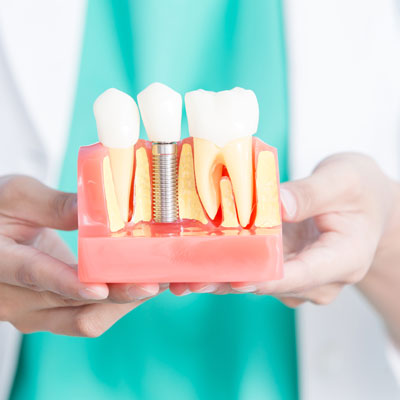

10
May
What to Expect From Your Dental Implant Procedure

Dental work can seem like one of the most frightening things people can experience. Part of that is because we can’t see what dentists do inside our mouths. The other part is that we don’t understand what is going on.
If you have missing or badly damaged teeth, there’s a good chance you need a dental implant procedure. Replacing teeth can be an involved process. There are many steps to go through before you can receive your implant.
If you have an implant procedure coming up, we have some information about what you can expect from your procedure below.
Planning Your Dental Implant Procedure
Dental implant surgery requires planning to ensure everything goes correctly. Implants usually require more than one session to complete, so several specialists may consult during the planning stages.
Some specialists focus on conditions of the face, jaw, and mouth. A specialist that focuses on the bones and gums might examine you too.
In some cases, an otolaryngologist, who specializes in the ear, nose, and throat, may need to take a look at you.
During the planning stage, dentists perform a comprehensive exam of your mouth. This will include x-rays and 3-D imaging of your teeth.
Since you are undergoing surgery, your dentist will review your medical history. You will need to inform your dentist if you have any medical conditions and if you take any medications.
People that have heart conditions may need to take antibiotics before their procedure.
Finally, the dentist will come up with a treatment plan. The plan will depend on the number of implants, the number of teeth you have left, and your jawbone’s condition.
Preparing for the Procedure
Before your dental procedure, your dentist will give you a special anti-bacterial mouthwash. You may also receive antibiotics to take a few days before the surgery as a preventative measure.
On the day of your procedure, you should eat a hearty breakfast. If you’re being sedated, your dentist will have you fast after midnight.
If you’re being sedated, bring someone with you. That person should drive you to and from your procedure.
Phases One and Two
Dental implants happen in two phases over a six to nine-month period. Once you are sedated or anesthetized, your dentist will make an incision in your gums. This is done to expose the bone underneath.
If your jaw bone doesn’t need a bone graft, the dentist will secure your implant to the bone. Once the implant is in, a component is placed over the implant, which will stay there throughout your recovery.
After that, the dentist closes up the incision.
At the beginning of the second phase, the dentist will re-expose the implant.
The dentist will make an extension on the implant, which will help in fitting the new crown.
After this will follow several follow-up appointments. The goal of the appointments is to determine how you are healing. This time will also be spent creating the crown.
Over several months, your jawbone will grow and connect to the implant. While this happens, your dentist will use models of your mouth to create the crown.
Once healed, your dentist will place an abutment. Your new crown will attach to the abutment.
Holistic Dental Care
A dental implant procedure will take some time to complete. This procedure will lead to better health and a smile you’ll love. It’s important to follow all the directions your dentist gives you and to be patient throughout the process.
At Brighton Dental, we strive to provide holistic dental care for our patients. Some of the services we offer include general dentistry, mercury amalgam removal, restorative dentistry, and more. Contact our office today to schedule an appointment.
